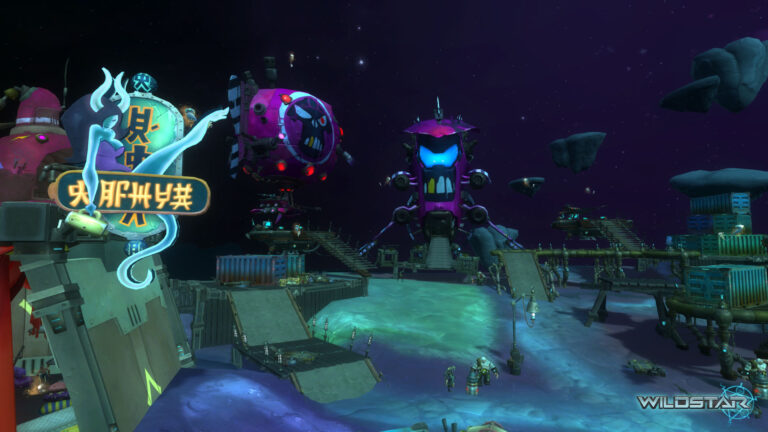Tim Cain is known as part of the legendary trio behind Fallout 1 & 2. He also worked at Troika and programmed Vampire: The Masquerade and one of my favorite games Arcanum. He recently released a video lambasting Carbine and NCSoft while disclosing some deep interpersonal issues at Carbine.
Tim’s video is authentic and his recount is accurate by all means. I covered WildStar heavily from 2011 onward and the stories back then were well known. Carbine was a toxic and unhealthy workplace which had the potential to release the best MMO of the golden age but instead failed with 9 years of development time and a further four post-launch to win back everyone ala Final Fantasy XIV.
The video is very misleading in some ways. It argues that there was a lack of unified vision. That’s true, but it was also completely the fact that everyone at Carbine was paid too much to leave but also didn’t want to work there that contributed to a massive amount of development pain the game had.
I love everything Tim has touched, including South Park: Stick of Truth and WildStar. I think Tim’s video does a great job of highlighting what kind of nightmare Carbine was. However, I don’t think that it was just NCSoft and the drama as to why the game failed…
The Argument Summarized by Someone Else
Tim argues that he was lead programmer until they let go the lead designer and gave him a you either do this job or this project is over scenario. He, not wanting the project to fail, took the position.
Let’s make a clear note of this for later.
In taking the design role, he had many conflicts with the art department where they said that he didn’t accept anyone’s ideas. Further management conflicts included the art director making design decisions. Furthermore, NCSoft had given very short turnaround times and lots of “or else” style pressure to drive the design mechanisms of the game.
The art director, studio head and design head (Tim) all had separate visions and were engaged in a three-way tug of war. In a meeting the Fun QA review had come in and it was announced that it was all design complaints. The document came in, it was positive on design. Following, an art document came in full of complaints. Ultimately, he decided to part ways from the project truly for the last time due to that.
He concludes a lack of singular vision between the art director and studio head was what caused WildStar to fail. That a video game needs everyone working in a unified vision.
The Development Turmoil Lasted Too Long
WildStar’s development began in 2005 and Tim joined very shortly into the game’s development. He was made design lead in 2007 and stayed until 2011. That was four total years of him running the design ship for a game that launched only three years later. When he brags about core design decisions that were part of the game that were sourced from him, he’s right!
He was the design lead for a considerable portion of the game. The game had no design, classes or anything until he took over and midway through his tenure, he left the company to join Obsidian. Why? Because they weren’t Carbine. See this RockPaperShotgun (archive) post with them celebrating him going to Obsidian.
Furthermore, no one should accept “do a job you’re not known for or we’re ending the project”? Tim was the programmer of the legendary Fallout Trio, not the designer. When they made that ultimatum, it would have probably been better for everyone for anyone in that position to either accept and find a replacement or to refuse and let the company eat crow.
The mentality of pushing through, keeping it going, bootstrapping through the toxicity is why the game failed. Everyone who worked on the game tolerated the nonsense and the end-product shows.
Furthermore, they didn’t evolve past Tim’s designs which probably (if I was him would hurt a bit). They were time locked to a period where things like WoW: Cataclysm was an experiment to drive the MMOs back to the more “hardcore.” This was reflected heavily in the design of WildStar’s endgame, which used the Vanilla / TBC raid gating system.
Everyone who worked on that game is accountable and Carbine could have, if the right leaders in place, done something brilliant.
Responsible Management Makes Good Games
I’m still hung up over the amount of tolerance Tim had for everything in that story. Management infighting is a huge red flag and the people overseeing leadership should be taking care of it. Since it wasn’t being taken care of, the product wasn’t ever going to be successful.
Tim, by his own admission, accepted the very good pay for the project. He was complicit in the game, he didn’t develop a modern endgame system during his long tenure there, those who came after him didn’t work on an endgame. Massive turnover is why so many systems felt shallow and incomplete.
Those who worked on the game and kept working there taking the pay and being complicit with the studio were the ones at fault for the game. It was clear the entire time that everyone at Carbine was involved in the back and forth and the studio
The art director being mean and NCSoft having lax oversight over industry professionals who seem to be infighting has much less to do with the fact those who were there, touching the game, abandoned it, walked away from it, bickered and fought during its development and in the end released a game that had the most promise of any golden age MMO and the most disappointment since Vanguard.
Video Game Culture at the Time
One thing Tim points out and another reason I’d say the video is misleading is that the culture at the time in bootstrapped game projects was literally live eat work play the game. It wasn’t a uniquely Obsidian problem. It was rampant and part of the reason a lot of social media drama started flaring up in 2015+.
Reasons WildStar Failed
Below let us be reminded of why WildStar actually failed:
- Internal conflicts within the studio and frequent staff turnover.
- Project management failures and ineffective leadership.
- It had a subscription in a free-to-play market.
- It had outdated endgame content that modern gamers didn’t want (gated raids).
- Buggy gameplay, complex systems and the gating of lots of content made it frustrating.
- No support after launch.
- No class balance at all.
- Completely catered to hardcore players who didn’t like what they had.
- Zero pacing. The game moved too quick or too slow.
- The UI was from 2005 and hard to use. Tutorials were limited and confusing.
- No immersive lore, lots of grinding, story was kinda meh.
- Dungeons were overtuned. Raids were overtuned. PvP was unbalanced.
I’m sure Tim had something to do with some of these things, but at launch he was at Obsidian having shipped South Park: Stick of Truth and working on Pillars of Eternity.
Conclusion
Tim Cain’s involvement in the development of WildStar was significant, and his contributions to the gaming industry as a whole are undeniable. However, the video he released criticizing Carbine and the issues within the company offers only a partial perspective on the root causes of the game’s decline. While it is true that management conflicts and external pressures from NCSoft played a role in the challenges faced during development, it is crucial to consider that Tim himself was the design lead for a significant portion of the game’s development and should bear some of the responsibility for the final product.
It is important to acknowledge and understand that the creation and success of a game heavily relies on effective collaboration and responsible leadership. The demise of WildStar can be attributed to various factors that contributed to its downfall, such as outdated endgame content, internal conflicts, and questionable decisions made by individuals involved in the project. Ultimately, WildStar serves as a stark reminder for the gaming industry. It highlights the significance of efficient teamwork and competent project management in order to deliver an extraordinary gaming experience to players.
Tim is amazing still and his work after WildStar continued to be great. Obsidian games are buggy was a meme that seemingly died off and WildStar definitely wasn’t just his fault – it was a lot of people’s faults and an era that supported working in vacuums. Thankfully in the modern world I don’t think a Carbine repeat could occur.






